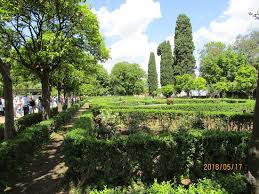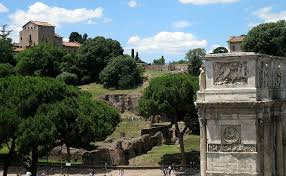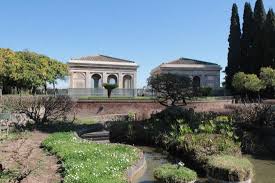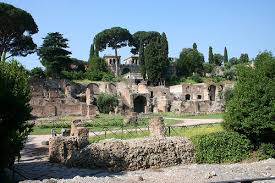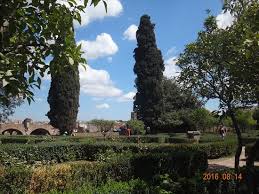In the heart of ancient Rome, the Archaeological Heritage Authority in Rome prepared the old garden proposals at Palatin Hill. Between roses, falls, viburnum, peck, petunia flowers and walking to discover the glories of the past, from August to French.
The route of the visit is divided into 8 stations, in addition to the so-called Neronian Criptoportico, where the educational area is created that shows the history of the places concerned.
1) The house garden of Augustus
2) Blue flowers in ellipsoid
3) Gardens and gardens Antique prints exhibited in Cassina Varnes
4) Plants and glass to imitate the octagonal fountain water
5 and 5 a) the Platonism and Plumbago in the oceans of Domus Augustana
6) Stage of Acts
7) The essence of the French nursery
8) The old rose garden in the gardens of Varnes
The history of the green spaces of Palatine Hill, from the moment it is formed, represents the history of plant species, which influenced our populations in these centuries. Organized generously in the Imperial era, and partially transformed into the Varennes Botanical Gardens, to accommodate the new special plants imported by Ame¬erici, were restored in the 19th century by the archaeologist Giacomo Bonnie. In addition to the "classical" Roman plants, he also wanted to introduce the new plants that date back to the end of the 18th century from the East and South Africa thanks to the increase in trade favored by the English domain, which over time formed "herbal" Italian ornamental plants. The incubation of these plants is now being reintroduced in the Varnes Gardens.
Many literary testimonies and some symbolic testimonies have allowed us to replicate the imperial gardens, although it is not possible to know exactly what species have already been cultivated in the vast narrow areas, also because of the impossibility of carrying out scientific investigations of events that have characterized places over the centuries.
For this reason, particular attention has been given to the nymphs at Palatin Hill, whose boundaries are still well defined. To restore the nymphaeum image, the remaining fixed form, it is decided to call the two main components, namely the materials that were built and the water: in the first case were used white blossoms (marble)), in the second flowering in different shades of blue and blue (water). With these standards, all nymphaeums, however, were reconstructed (Plumbago, Surfinia, Solanum, Convolulus, Verbena, Tapiens and Petunia in white colors and gamma colors in blue and purple). The technique used to present the idea of nin¬fei visually resembles the mosaic culture, which has an amazing aesthetic effect, focusing on plants (about 12,000) in only two colors, with blue-blue predominance. . The situation of the Augustus house is dissimilar, and only partly excavated: the intimacy of the place indicates that the structure of the garden on the frescoes of Villa de Livia is now exhibited in the National Roman Museum
Palace of Massimo. The species used, also found in the ancient Pompian Gardens, are found in those frescoes - Milograny, Viburnum, Leopard, Quince, Rose, Rose, cypress, shit - with grills. They shared the park in the painting, then the plane tree, fir and pine, which are exotic species according to the pli io nio of the original plants at the time, and may have been celebrated in these frescoes as recently incorporated decorative plant species.
The species that are then the subject of the tutorial on the plants of the imperial era, with others, using quotations from classics, to complete the illustration of time gardens and display them and illustrate them in a series of plates presented in the so-called cryptoporticus Neronian.
As far as the gardens of Varnes are concerned, it is clear that healing is actually impossible. In this area, the Farnians prepared Hortus according to the criteria of collection. This was due to the arrival of new species of the Americas, such as yucca and agave. In the twentieth century, archaeologist Giacomo Bonnie created an Italian garden at the end of the excavations that were promoted to illuminate the imperial dwellings. He cultivated cypress and laurel trees, but he also welcomed imported species as a result of the expansion of the English language such as peony and camellia. With this event, the plants were depicted in seventeenth-century tables of Adenini and Ferrari, with special captions referring to the species that reached Europe from Europe at the end of the 18th century, such as Wisteria, Bougainvillea, Mandarin, Peony, Cherry trees, Gerber, to name a few. It will certainly be surprising for less experienced visitors to discover that today's plants are very popular for us like Yuca, Passiflora, Aga ¬ve and Mimosa in Europe for the first time from the Americas in Farnese Gardens, with tomatoes, pepper, pepper, tobacco and figs in India , To name a few, which contributed to changing eating habits and landscapes. The entire Rose Garden, established in the 1960s, was also renovated on this occasion using octocene.
The origin and richness of the gardens of Varnes are listed instead through a gallery of publications collected at Casina Varnes, reopened to the public on this occasion. The casinos, which used the old structures in the earth as institutions, had no personality to inhabit. It was a "support point" for short stays, visits, courageous dates and secret talks, but above all to observe the panorama. On this occasion, it will be possible to follow up on the renovation of the exhibition's murals by artists associated with the Zuccari environment.
The project was developed by Ilicta with the Archaeological Heritage Authority in Rome under the auspices of Annamaria Ciarallo, Giuseppe Morganti and Maria Antonietta Tomei.

